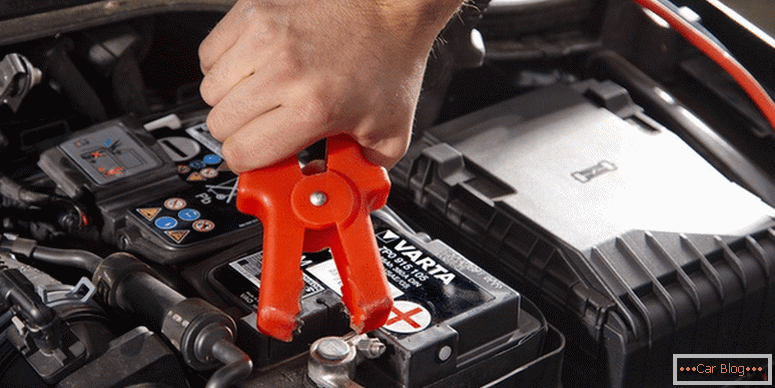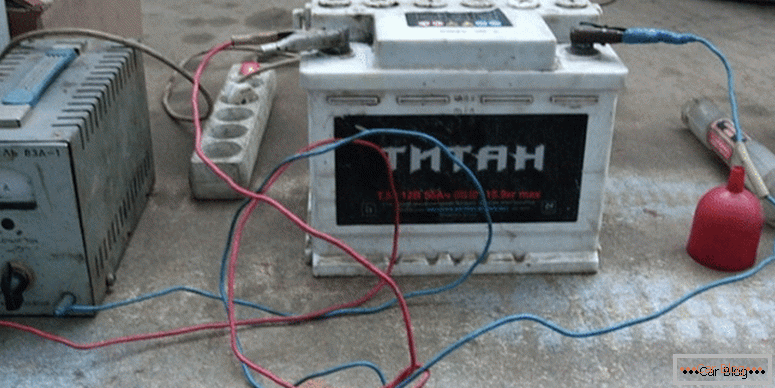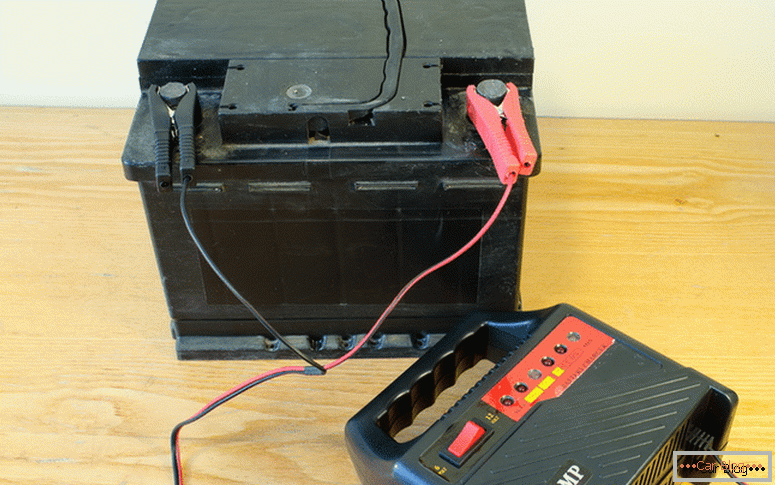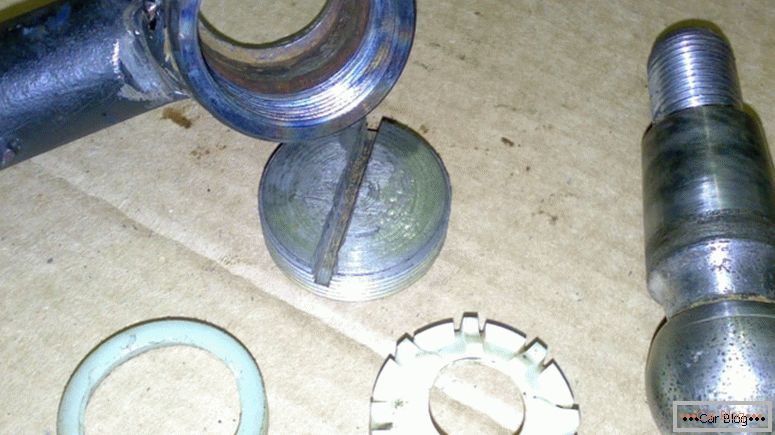Automakers are trying to make intervention on the part of car owners in the design of the car and its individual components and assemblies is minimal. Thanks to this philosophy, modern automotive repair often comes down to simply replacing one unit or module with another.
The electrical system is no exception. After all, most of the batteries in the car are maintenance-free. However, despite this fact, it is possible to independently charge a maintenance-free car battery at home.
Content
- 1 Design features of automotive batteries
- 2 Preparatory activities
- 3 Car battery charging process
- 4 Do you need to charge a new battery
- 5 Safety rules for self-charging batteries
Design features of automotive batteries
In addition to the fact that rechargeable batteries can be divided into maintenance-free and serviced, they can be classified by type of electrolyte. This component of any modern automotive battery is available in three forms:
- with liquid electrolyte in tanks based on acid and distilled water (classic version);
- with gel base (rather expensive, but more durable and resistant to charge / discharge differences);
- electrolyte is absorbed into the non-woven polypropylene base (less common, but more progressive type of battery).

Battery sizes
All maintenance-free car batteries do not have access to their internal device. This condition imposes restrictions on the manipulation of the battery, so any manipulation can be carried out only with electrical parameters.
Preparatory activities
In order to properly charge a maintenance-free car battery, it is necessary to determine the conditions in which this will occur. There are two options:
- The battery will be removed from the vehicle and moved to a power source;
- Charger wires will be connected to the battery terminals for carrying out the procedure without disconnecting from consumers in the car.
In both cases there are negative and positive sides:
- The first option carries a “plus” in that you can take the battery out of the garage and control the charging process, which is carried out in normal temperature conditions. However, most likely there will be a reset of all electronic settings in the car, which will need to be reinstalled.
- The second option is convenient because you do not need to carry a heavy battery out of the garage and back; there will be no reset from disconnection. When voltage drops or improperly configured charger, consumers of electricity in a car can fail, which will entail their costly repair or replacement.

Battery Charger
Although this type of battery is called "maintenance-free", but this does not mean that they absolutely do not need to be used and properly maintained. After all, the process of charging them occurs at the time when the engine is started. And the question of maintenance concerns the manipulation of the internal chemical processes of the electrolyte.
See also: Car battery does not charge from charger - what to do?Car Battery Charging Process
There are several battery charging options:
- pulse;
- stepped;
- reversible;
- combined.
Each one will lead to full battery charge. The difference between them lies in the level of voltage or current. In some cases, a constant voltage is held, and in some a stable current.

Charging the battery without removing the car
To control the level of the current charge of the vehicle, universal voltmeters or multimeters are used. There are special automotive instruments for measuring voltage. They are inserted into the cigarette lighter socket. On their digital display in real time, data are monitored with an accuracy of 0.01 V from the battery terminals.
Charging a car's twelve-volt battery is performed using a voltage of 16-16.5 V intervals. It is advisable to start the recharging process with a clean battery, it is better to strip the terminals of the oxide film for better contact with the crocodile charger. Also, when connecting the charger to the battery, there should be no cracks or obvious traces of smudges.
The time required for a full charge can be calculated based on the stated battery capacity and the current output from the charger. For example, to completely put in order, a battery with a capacity of 55 Ah, a charger issued by 5.5 A, will require 10 hours. You need to check the charge level with a voltmeter. A fully charged battery should show 12.6 V.
If it is possible to adjust the charging current, it is preferable to choose a lower level.
Due to this, the service life of an automobile electrical unit is extended. Most chargers limit the current to 15 A. Using the constant voltage method, during the start of charging, the maximum possible current is supplied, which during the process drops to 10% of the battery capacity.

Garage charging battery
Every hour with this method of charging is controlled by the battery voltage at the terminals. If its level has reached stability and does not change for 1-2 hours, and a slight “boiling” begins in the banks, the process can be completed.
See also: Computer diagnostics of car errors do it yourselfIn the combined charging method, a stable current is first supplied, and then the charge is maintained at a stable voltage. The output is controlled automatically using special chargers. At the end of the process there is an independent disconnection from the power supply.
Do you need to charge a new battery
A new battery purchased at an auto shop is often put into a car without additional recharging. This can be done if less than 6 months have passed since the moment of manufacturing the battery. Otherwise, partial discharge could occur.

You can always charge a new purchased battery yourself. However, it is not necessary to subject it to an intensive process with a large amperage. During charging, you will need to follow safety rules for working with batteries, because there is a release of harmful gases.
Safety rules for self-charging batteries
At home or in a garage, charging a car battery should be indoors with good ventilation. This is due to the release of hydrogen and oxygen gas mixtures. Smoking, sparking or the use of naked flames near the charging zone are not allowed.
During cleaning of the battery from pollution it is impossible to use rags from artificial materials in order to avoid static electricity. When the electrolyte boils, it is necessary to stop the charging process.



